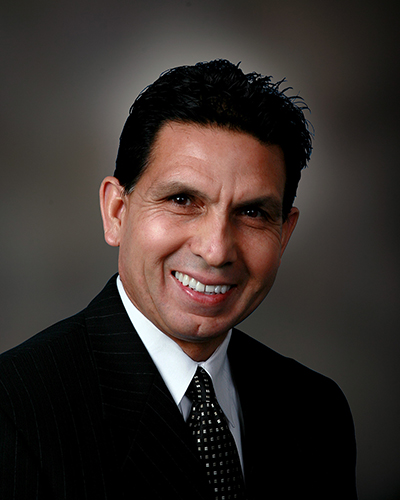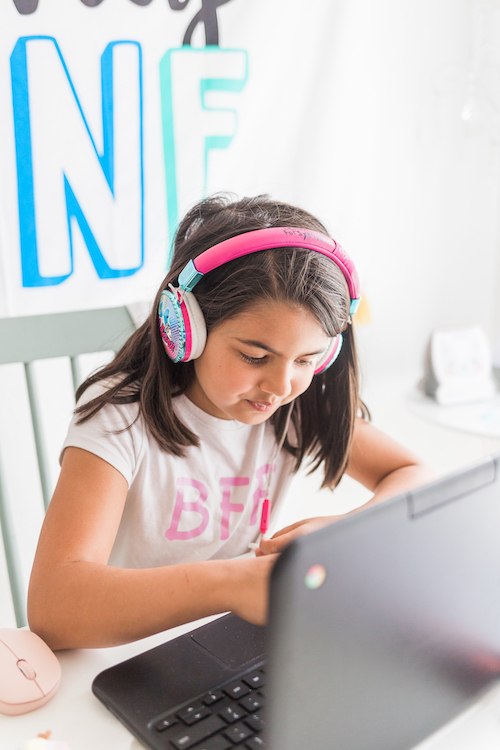The fall school year will be like no other. What can families expect from OC public schools for the 2020-21 school year?
Back to school is typically a time of preparing and planning. This academic year was unexpectedly interrupted when COVID-19 pushed Southern California schools into distance learning indefinitely. Now educators and parents alike are preparing and planning for a school year that contains many unknowns.
“We want to resume a normal school environment as soon as possible,” said Orange County Superintendent of Schools Al Mijares. “But we don’t just want to bring back a duplication of what we had before.”
So what will normal look like in the 2020-21 school year?
“The social and emotional health of our students is number one,” said Capistrano Unified School District Superintendent Kirsten Vital. “Our second priority is student learning. Healthy, happy students have a strong foundation for academic success.”
Perhaps the most pressing question is whether students will return to the classroom at all in the new school year.
“My biggest concern for 2020-21 is how much in-class time my kids will have and how much ‘distance learning’ will be required of me,” said Tiffany Collins, a San Juan Capistrano resident with students enrolled in CUSD.
It’s unclear when students will return to a standard classroom environment, since the timeline is contingent on forthcoming guidelines from both the state and local levels. Each Orange County school district plans and operates independently under the authority of their locally elected boards and superintendents.
“There have been numerous suggestions from the state superintendent indicating that schools could continue with distance learning or some combination of being physically in the classroom and also online,” said Eliza Grossman, an eighth-grade English and theater teacher in La Habra City School District. “There are still many unknowns at this time and we are doing our best to prepare ourselves and our students and their families for all scenarios.”
Along those lines, the Orange County Department of Education created the Orange County Reopening of Schools Taskforce.
“We have a committee of educators and medical professionals that are working on guidelines for reopening our schools,” Mijares said.
Members include administrators who oversee business services, educational services and health and human resources divisions in Orange County. The task force also has support from the OC Health Care Agency, CHOC Children’s and the University of California, Irvine. They are hoping to create guidelines for reopening by pooling resources and aligning efforts.
“We are looking at what we have to do to open schools,” said Mijares. “The other thing that is laced in there is the budget. The budget is going to drive a lot of decisions.”
A statement released on April 28 by National Education Association President Lily Eskelsen García emphasized the need for specialized staff like school nurses, school social workers and school psychologists to address mental and behavior health issues. Not to mention the general task of keeping reopened schools safe and healthy.
“Federal help is paramount to end the stay-at-home orders to assure students, parents and educators have the resources and supports necessary to succeed,” Eskelsen García said.
On May 14, Gov. Gavin Newsom submitted his May revision budget proposal to the legislature with a plan to close a budget gap of nearly $54 billion and prioritize public health, public safety, public education and those most impacted by the virus.
“State funding for schools will be impacted by the economic challenges we will be facing this year and next because of the economic shutdown,” said Vital.
“We may not be able to have all 30 kids in at once,” said Fullerton middle school teacher and former mayor, Jesus Silva. “So how do we do that? Do we A: Hire more teachers so we have 15-to-1? But that’s dependent on the budget, right? Or B: Do we stagger it year-round with morning sessions and afternoon sessions? There are a lot of unknowns.”
CUSD is preparing by focusing on the students’ mental and physical health and making sure students are caught up.
“We have counselors at all of our 63 campuses who are working diligently to support our students virtually during the school closures and will provide programs and services as we transition into the new school year,” Vital said. “This summer and into the fall we will work to address learning gaps and provide intervention for students.”
Mijares pointed out that in addition to the resources at most OC school districts, parents can also reach out to the OC Health Care Agency: “OCHCA has launched a website with an array of mental health services that can be accessed by phone or online.”
Newsom’s six indicators for the modification of the stay-at-home order includes the ability for schools and child care facilities to support physical distancing. As a result, it’s likely the 2020-21 school year will continue elements of distance learning while proceeding cautiously back to the classroom.
“We are looking at what you might call a hybrid education where on one hand you have face-to-face contact with teachers and combine that with online learning,” said Mijares. “Online learning is not going away. In fact, online learning is becoming a more powerful driver of the instructional program.”
In early May, Anaheim Union High School District announced plans to launch an online secondary school for the 2020-21 academic year. AUHSD officials said Cambridge Virtual Academy will serve students in grades seven through 12 with online coursework. Seats are limited and the district anticipates they will fill up quickly.
More districts might be leaning toward adapting material to fit new digital formats.
“I learned just how much of my curriculum can be made digital while still keeping its integrity,” Grossman said. “Online teaching is not as simple as ‘just convert it to a Google Doc,’ but admittedly, this extraordinary circumstance allowed me to push myself to view my curriculum through a digital lens.”
Silva said that while the pandemic has created a renewed appreciation for the classroom, it has also opened many eyes to what can be achieved with educational technology — and open communication between parents and educators is key.
“Give the distance learning a chance,” Silva said. “Encourage your kids to keep trying. Just be patient. And share your concerns with teachers and administrators. We have to work together as best we can to figure it out.”
At any rate, students will not return to the classroom without guidelines.
“We have to make sure we have the safest environments for our students,” said Mijares.
But when students can go back to school, the return will be a happy one.
“One thing I have noticed with my students is they miss school,” said Silva. “I think kids and teachers alike will be glad to be back.”
Q&A with Orange County Superintendent of Schools Al Mijares
Parenting OC: What are some challenges OC schools were able to overcome this year that will help them be successful in the 2020-21 school year?
Al Mijares: I have likened this year to transforming a high-speed train into a supersonic jet while it’s in motion — and carrying passengers. Our districts worked hard to rapidly assess their capacity to offer digital learning opportunities and their ability to connect with students and their families, reaching out to obtain additional resources when needed. Educators almost immediately familiarized themselves with video-conferencing platforms and curated online resources to maintain academic continuity. And we were all eager to share successful practices with one another. Everything that was learned this year will only enhance our ability to serve students next year, particularly if there’s a need to resume social distancing measures on any level.
POC: The pandemic caused an unexpected disruption during the academic school year. What steps are being taken to bridge any possible learning gaps the disruption may have caused?
AM: I think it’s important to first express my deepest gratitude to the 20,000-plus teachers in Orange County who seized every resource at their disposal to connect with students, provide academic stability, maintain equity and offer emotional support during the worst public health crisis of our lives. They really took up the challenge of making sure this wasn’t a lost semester, but instead an opportunity to pilot meaningful distance learning.
To the extent that there are learning gaps, we believe districts and schools in Orange County will be able to identify areas of need using frameworks that are already in place, such as the Multi-Tiered System of Support framework, or MTSS, which aligns new and existing strategies to meet students’ academic, behavioral and social-emotional needs.
School leaders across the county have been trained to use data and high levels of collaboration to provide core support for all students, additional assistance for some and targeted interventions for those with the greatest needs. MTSS was specifically designed to create environments where every student’s name, face and story are known to staff. In 2016, OCDE was selected by the California Department of Education to lead its statewide implementation, and we’re proud of the work that’s been done.
POC: While there are many unknowns at this time, we can assume the coming school year will be different than past years. What are some things OC parents can do to help prepare their child for the 2020-21 school year and those changes?
AM: Communication has never been more critical. I think it’s vital for parents to be connected to their child’s school and district to receive the latest information about plans for the new year, whether it’s through social media, email, websites or phone calls. It’s also important to participate in surveys seeking input and assessing local needs.
Because this can also be a time of tremendous stress and anxiety for children, I would encourage our families to be attuned to any behavioral changes or signs of distress — and to seek out available resources if needed. Many school districts offer direct mental health supports. In addition, the OC Health Care Agency has launched a website with an array of mental health services that can be accessed by phone or online. You can find it here: https://occovid19.ochealthinfo.com/mental-health-support
These are incredibly challenging times, and many of our residents are struggling under the weight of uncertainty, isolation and, in too many cases, financial concerns. Remember that we are all in this together, and the number one priority of OCDE and Orange County schools is to ensure the safety and well-being of students and staff.
California’s Six Indicators for Modifying the Stay-At-Home Order:
*The ability to monitor and protect our communities through testing, contact tracing, isolating and supporting those who are COVID-19 positive or exposed
*The ability to prevent infection in people who are at risk for more severe COVID-19 symptoms
*The ability of the hospital and health care systems to handle surges
*The ability to develop therapeutics to meet the demand
*The ability for businesses, schools and child care facilities to support physical distancing
*The ability to determine when to reinstitute certain measures, such as the stay-at-home order, if necessary
— By Sarah Mosqueda









Leave a Reply